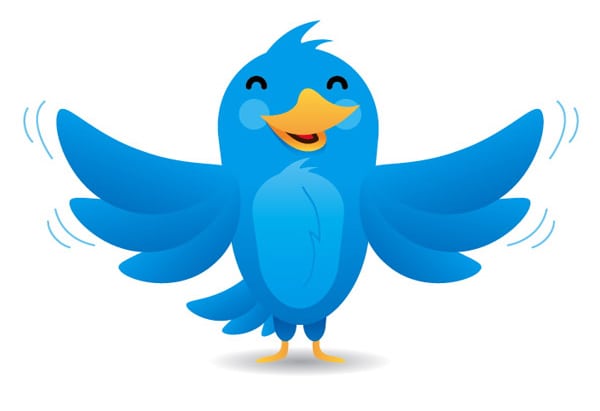
Prior to social media, the most humiliating response a PR pro could expect was an angry hang-up or testy email from an annoyed reporter. If the response was silence, the PR person was forced to trepidatiously phone the reporter, which usually then led to the angry hang-up. Sometimes with profanity.
Today, though, we are in an era of flack-shaming. Reporters routinely publish on Twitter the most ridiculous email PR pitches they receive for their followers to mock. Often, the shaming is warranted, especially if the PR pro is “reaching out” or “circling back” to the reporter, asking if they can “jump on a call,” or “have a desk-side meeting.”
Twitter and Journalists
The most generous journalists redact the names of the offending communicator. Some reporters make a point of pantsing the PR person. They share the entire exchange on Twitter, including the cringe-inducing faux-chummy language and the sender's email address.
There is a useful saying: “Never type anything on a screen you don’t want to see in print.” Until now, there has been a reasonable expectation that communications between PR pros and reporters remained between them. Today, though, there is no bar, so communicators must write email understanding they may be published.
Why It's Done
Transparency: Why do journalists do this? Some may see it as transparency, a way to show how the sausage is made. PR people assume that every reader knows that companies, politicians, charities, celebrities and countries have PR pros, but maybe not. So when a reporter brings to light the typically prosaic exchanges that occur between journalist and PR pro, especially if they are written in goofy or insincere jargon, it can feel like the reader is getting a glimpse into the secret world of spin-doctors. Everyone gets a laugh at the PR person's expense.
Outrage: Sometimes reporters flack-shame to publicly expose that a nefarious or controversial entity has retained PR representation. This is a double shame: It shows the entity is trying to buff its image with positive media coverage and it identifies the PR agencies willing to work for such entities.
Ethics: Reporters also flack-shame to virtue-signal to their peers and sources that their journalistic and ethical standards are unimpeachable. When a PR person invites a reporter to an event or – worst of all – offers payment, a tripwire is triggered. This results in the most dangerous form of flack shaming. The reporter will be understandably angry and incredulous that a flack thinks their byline is for sale.
Thus motivated, they will take to Twitter and They. Will. Hang. You.
Pay for Play Part I
Huawei'$ Ca$h: Recently, The Washington Post columnist Josh Rogin reported to his 203,000 Twitter followers that he received an email invitation from a representative of Chinese telecom giant Huawei. The invitation promised an all-expenses-paid trip to visit the company’s facility in Shenzhen. Rogin tweeted the email invitation, along with the name and address of the PR person who sent it. His reply to the PR person via Twitter said Washington Post policies and personal ethics forbid him "from taking thousands of dollars in gifts from a foreign corporation that acts as an arm of a foreign government intelligence agency.”
Ouch.
Other reporters who'd received the invitation joined the fray. Some noted the Chinese Embassy sent the invitation. None of this helped disprove suspicions that the government of China uses Huawei as an espionage tool.
Pay for Play Part II: The Taco Bell Case
Sometimes, a PR pro doesn’t even have to email a pitch. All you have to do is pick up their phone call.
A junior member of our team was doing their due diligence to ensure this was an editorial and not advertorial opportunity. Requests we unfortunately deal with quite often. Asking IF something is pay for play is not the same as asking FOR pay for play.
— Matt Prince (@Matt_Prince) March 1, 2019
Imagine being the unlucky pro who saw New York Times food correspondent Kim Severson tweet to her 99,300 followers recently: “Just spoke with @tacobell PR for a story I'm reporting. The guy on the other end of the line asked how much it will cost to be included the story. FOR THE RECORD: We don't pay sources nor do they pay us.”
Severson’s comment came only days after a Reuters/Ipsos poll in the Columbia Journalism Review found that 60 percent of respondents believe that sources sometimes or very often pay for inclusion in stories.
Severson’s tweet forced Taco Bell senior manager, PR & brand experience Matt Prince to jump into the fray: “A junior member of our team was doing their due diligence to ensure this was an editorial and not advertorial opportunity. Requests we unfortunately deal with quite often. Asking IF something is pay for play is not the same as asking FOR pay for play.”
A Balanced View
Could Severson have handled the matter privately with the first PR person (who mercifully goes unidentified) or Prince? Sure. Could Taco Bell have better trained its PR team members to identify the difference between New York Times journalism and advertorial? Sure. Yet it’s gotten more complicated initially to tell the difference between the two.
Big journalism outlets such as the Times, The Washington Post and the Wall Street Journal sell, and help customers create, sponsored “native” content. It runs alongside the papers' journalism on their websites.
Severson followed up with a conciliatory tweet: “I deal with corporate PR people a lot and have never been asked whether a story I'm reporting would cost money, so it was news to me. Reactions have been interesting and I've learned things. That makes it a valuable Twitter moment in my book.”
A lesson for us all.
Frank Ahrens is a VP at BGR PR in Washington D.C. and a former VP, global corporate communications, at Hyundai Motor
